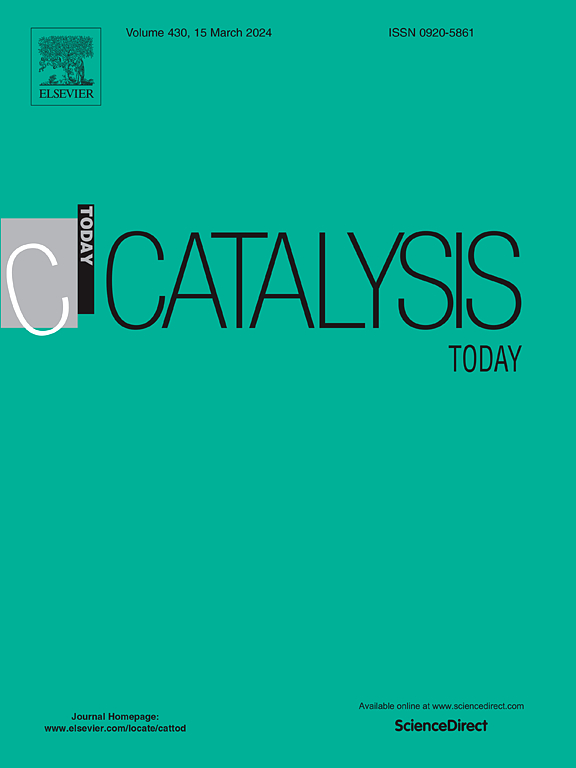Effect of nickel phosphide phase on the photo-thermal catalytic hydrogenation of carbon dioxide
IF 5.2
2区 化学
Q1 CHEMISTRY, APPLIED
引用次数: 0
Abstract
The CO2 hydrogenation (HYD) reaction was investigated over Ni phosphide (Ni3P, Ni12P5, Ni2P) catalysts to probe the effect of the NixPy phase on photo-thermal catalytic properties in comparison to Ni metal. The light absorption properties of 2.5 wt% NixPy/SiO2 catalysts differ substantially, with the extent of light absorption decreasing as the P/Ni molar ratio of the Ni phosphide phase increases. This finding directly impacts the photo-thermal catalytic properties as the photo-enhancement (light activity / dark activity) correlates linearly with the extent of light absorption. For comparison purposes, 2.5 wt% Ni/SiO2 catalysts were also investigated and showed high activity but suffered from low CO selectivity (57–68 %). A Ni3P/SiO2 catalyst was the most active of the Ni phosphides with high CO selectivity (>95 %), while Ni12P5/SiO2 and Ni2P/SiO2 catalysts had lower CO2 HYD activities but CO selectivities above 98 %. Upon light exposure, the NixPy/SiO2 (and Ni/SiO2) catalysts exhibited significant rises of temperature (∼200 K increase from room temperature), indicating the importance of photothermal heating in increasing the CO2 HYD rate. The findings highlight how a non-metal element (i.e., P) plays a crucial role in tailoring the photo-thermal catalytic properties of earth abundant nickel metal.
求助全文
约1分钟内获得全文
求助全文
来源期刊

Catalysis Today
化学-工程:化工
CiteScore
11.50
自引率
3.80%
发文量
573
审稿时长
2.9 months
期刊介绍:
Catalysis Today focuses on the rapid publication of original invited papers devoted to currently important topics in catalysis and related subjects. The journal only publishes special issues (Proposing a Catalysis Today Special Issue), each of which is supervised by Guest Editors who recruit individual papers and oversee the peer review process. Catalysis Today offers researchers in the field of catalysis in-depth overviews of topical issues.
Both fundamental and applied aspects of catalysis are covered. Subjects such as catalysis of immobilized organometallic and biocatalytic systems are welcome. Subjects related to catalysis such as experimental techniques, adsorption, process technology, synthesis, in situ characterization, computational, theoretical modeling, imaging and others are included if there is a clear relationship to catalysis.
 求助内容:
求助内容: 应助结果提醒方式:
应助结果提醒方式:


